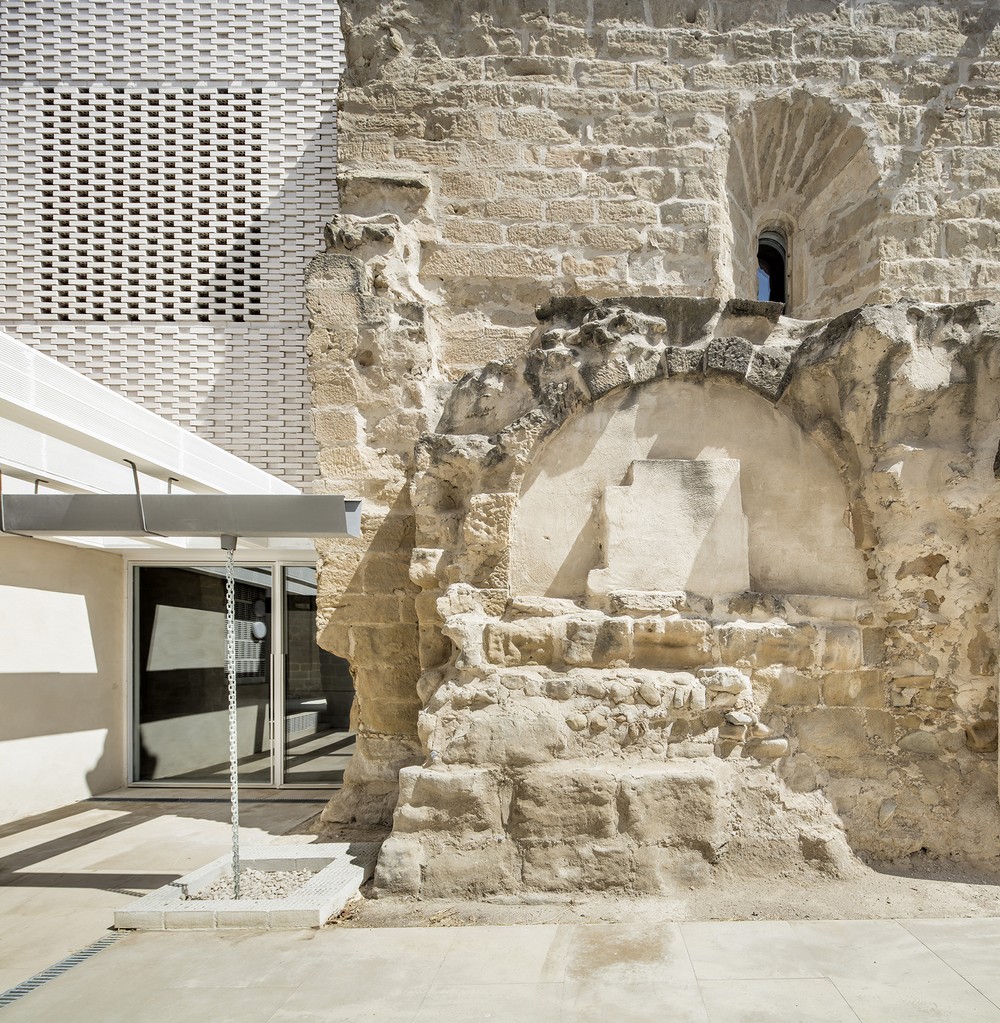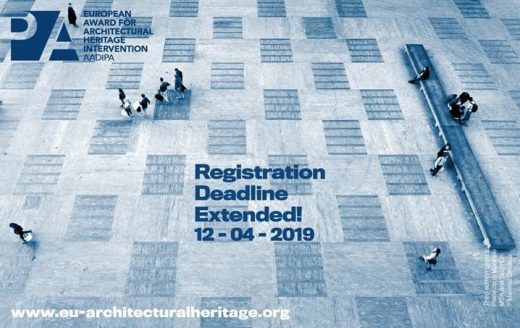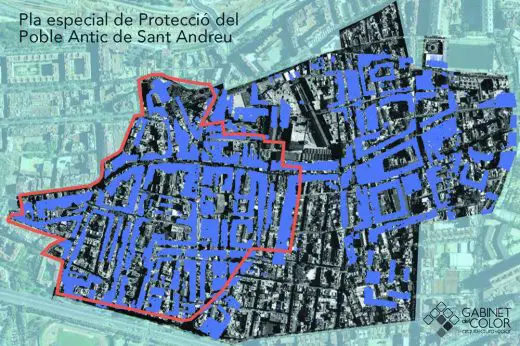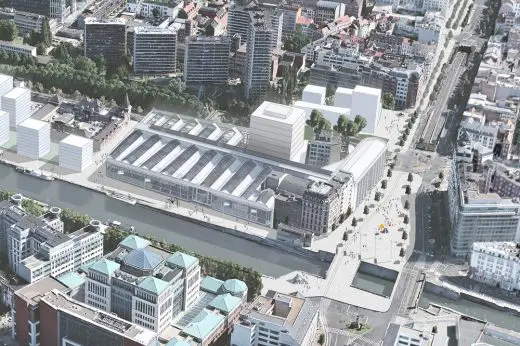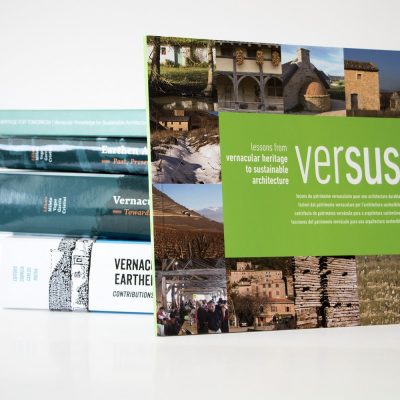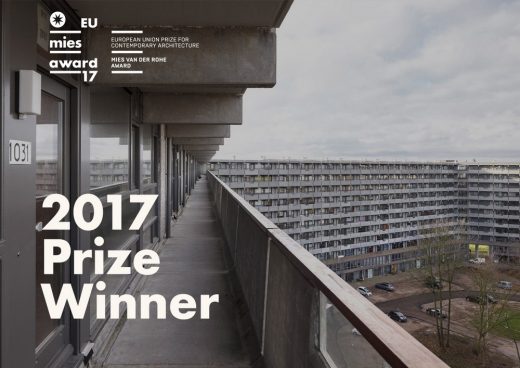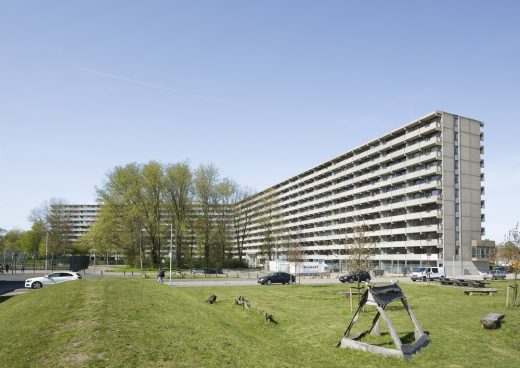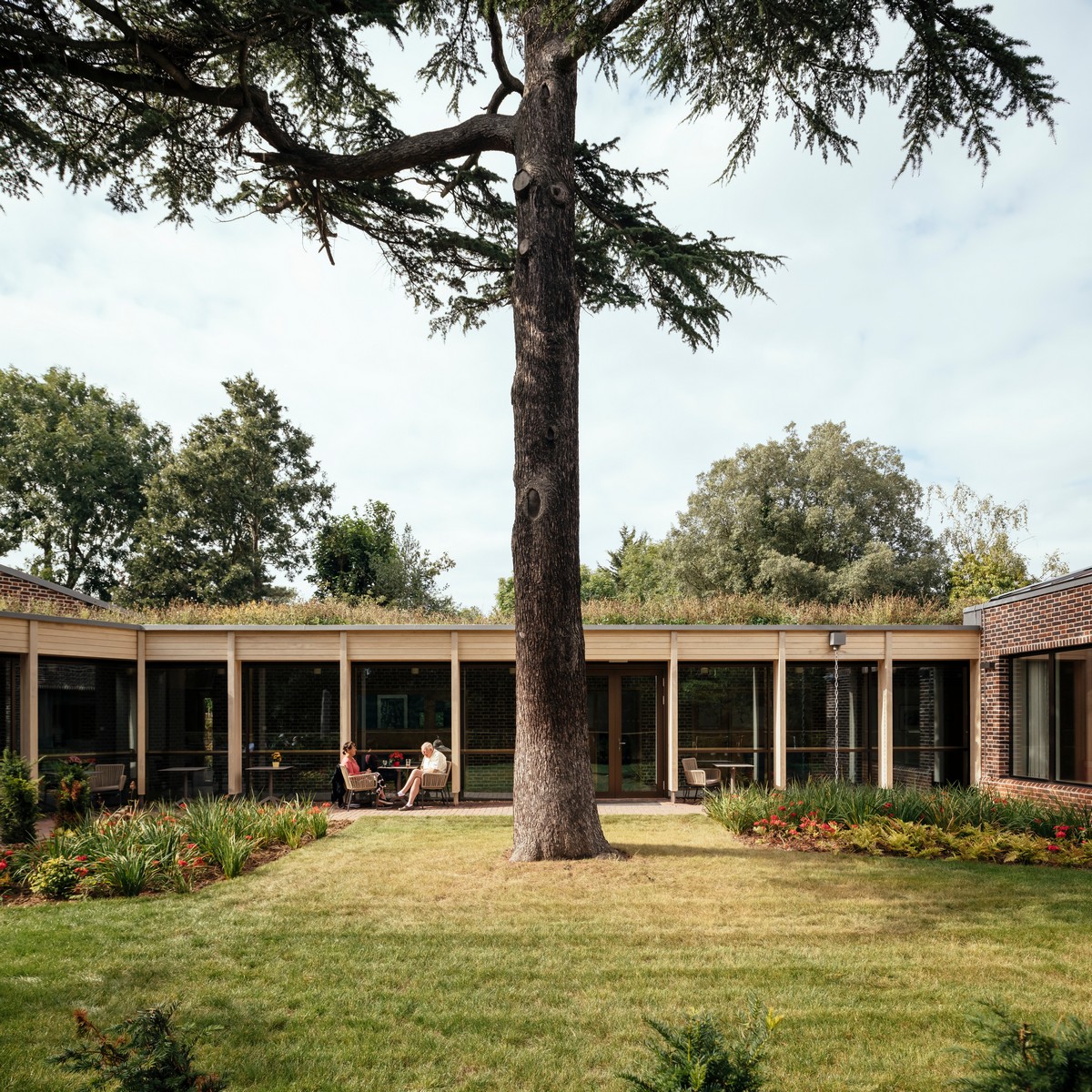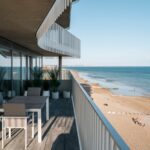4th European Award for Architectural Heritage Intervention AADIPA, Building News
European Award for Architectural Heritage Intervention
Biennial prize organised by the COAC and the AADIPA – Buildings + Architects
3 Apr 2019
European Award for Architectural Heritage Intervention 2019
4th edition of European Award for Architectural Heritage Intervention AADIPA
We announce that the registration deadline is extended until the 12 April, 2019, 24.00h.
The registration for the 4th edition of European Award for Architectural Heritage Intervention AADIPA, a biennial contest organized with the support of COAC (Architects’ Association of Catalonia) and AADIPA (Association of Architects for the Defence and Intervention in Architectural Heritage) the purpose of which is to distinguish patrimonial good practices and contribute to their disclosure, will remain open until April 12th, 2019.
The Award for Architectural Heritage Intervention AADIPA’s 4th call, addressed to professionals related to interventions in architectural heritage – architects, historians and archaeologists.
Any completed work, carried out or published in the European geographical area during the period between January 1, 2012 and December 31, 2018, and which meets the requirements of the 4 categories of the award can be entered:
Category A: Intervention in built heritage All architectural, permanent or ephemeral interventions in architectural properties of heritage interest.
Category B: Exterior spaces All interventions in the historic public space, in monumental and cultural landscape environments.
Category C: Urban planning All planning work aimed at the protection, conservation and enhancement of architectural heritage.
Category D: Disclosure Those initiatives, activities and actions that are aimed at disseminating the values of architectural heritage.
One more year, the European Award for Architectural Heritage Intervention AADIPA has an international jury for each category that, in its 4th edition, will be formed by the architects: Louis Leger, partner of the architecture studio BAST of Toulouse; Marià Castelló from Marià Castelló Architecture based in Formentera; and Leticia Soriano from Alea Olea, in Category A. Benoit Moritz, founder of the Belgian firm MSA; Elisabeth Abalo from Abalo Alonso Arquitectos; and Elena Albareda from Cíclica, in Category B. Professor in Urban Design and Landscaping at the Polytechnic of Milan, Chiara Nifosi; Javier Gallego, Ph.D. in Architecture from the Universidad Politécnica in Madrid; and Joan Casadevall, director of the architecture project Gabinet del Color, in Category C. Finally, Mariana Correia, international consultant for ICOMOS on World Heritage; José Manuel Chacón Bulnes, Ph.D. and Master’s degree in the Restoration of Historical Heritage from the UPCT; and Anna Ramos, architect and director of the Mies Van der Rohe Foundation in Barcelona, in Category D.
In the 4th edition, besides, one of the award’s latest developments is to increase the number of works selected as finalists. Thus, in category A, the jury will make a selection of up to 15 and in B, a maximum of 10, from which, in both cases, will emerge an award-winner and three finalists; on the other hand, in categories C and D, there will be one winner and three finalists. With this new formula, the Award management is committed to giving visibility to a greater number of works and recognizing the optimum level of good heritage practice in Europe. In addition, from all the work presented, the award management, will concede for the first time a Special Restoration Award to the intervention that from a technical and methodological point of view stands out for its quality, precision and respect.
The European Award for Architectural Heritage Intervention AADIPA, led by Ramon Calonge, Oriol Cusidó, Marc Manzano, and Jordi Portal, architects members of the group AADIPA, that in its previous edition enjoyed registration figures confirming its international notoriety and with relevant overall quality in the presented proposals, aspires to continue increasing participation and quality, to consolidate its European scope and to involve associations, citizens and other agents related to heritage in order to open up to society.
As happens every year, the official award ceremony will take place within the framework of the International Biennial of Architectural Heritage Intervention. A conference that is organized by the award management, with the support of the COAC, AADIPA and the Generalitat de Catalunya, and that will hold its 4th edition in June 2019 in Barcelona.
To download the complete rules: http://bit.ly/2hzlwvT
Previously on e-architect:
16 Jun 2017
3rd European Award for Architectural Heritage Intervention Winners
3rd European Award for Architectural Heritage Intervention Winners
SOCIAL ASPECTS, QUALITY AND PRECISION, PRESENT IN THE WINNING ENTRIES OF THE EUROPEAN AWARD FOR ARCHITECTURAL HERITAGE INTERVENTION AADIPA
Winner – Renewal of Bernardas Convent in Tavira by the architect Eduardo Souto de Moura:
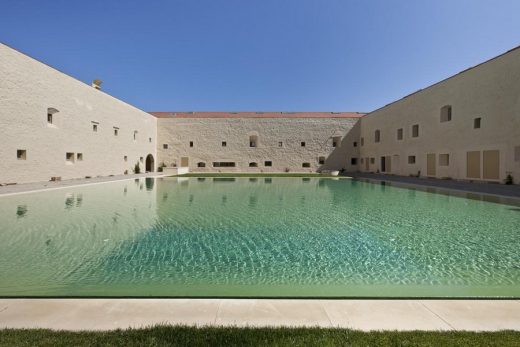
photograph : Luis Ferreira Alves
– The conversion of a convent into a holiday apartment complex, the restoration of a group of plots as urban market gardens and an urban development plan responding to the demands of local residents are among the winners of the 3rd European Award for Architectural Heritage Intervention AADIPA. The jury, which praised the overall quality and rigour of the almost 200 entries, short-listed 18 projects from which it selected four winners and two special mentions.
– The European Award for Architectural Heritage Intervention AADIPA is a biennial award organised by the COAC (Association of Architects of Catalonia) and the AADIPA (Association of Architects for the Defence and Intervention in Architectural Heritage), with the collaboration of the Ministry of Culture of the Government of Catalonia. This third award has maintained a high level of international participation, with Spain, Portugal, France, Italy and Belgium being the best-represented countries.
Barcelona, 15 June 2017_ The winners of the 3rd European Award for Architectural Heritage Intervention AADIPA were announced by the jury today at the COAC headquarters in Barcelona. The announcement of the 18 short-listed projects, from which two special mentions and four winners were chosen, was made during the 3rd International Architectural Heritage Intervention Biennial AADIPA. The awards were presented by Mr Jusèp Boya, Director General of Archives, Libraries, Museums and Heritage of the Ministry of Culture of the Government of Catalonia; Mr Daniel Mòdol, Councillor for Architecture, Urban Landscape and Heritage of Barcelona City Council; Mr Albert Civit, Director of INCASOL (Catalan Land Institute); and Mr Lluís Comerón, Dean of the Association of Architects of Catalonia.
Praising the high overall quality of the submitted entries and highlighting the precision and accuracy with which the interventions approached heritage restoration, the international jury of the award decided on the following winners and runners-up in each of the four award categories:
In Category A) Intervention in Existing Architectural Heritage, the jury increased the number of runners-up to six due to the high level of participation and quality, diversity of scales, complexity, ambition and sensitivity of the entries. The six short-listed projects were:
– Conversion of the Bernardas Convent, by Eduardo Souto de Moura (Tavira, Portugal)
– Culinary school in the old Sol89 abattoir (Cadiz, Spain)
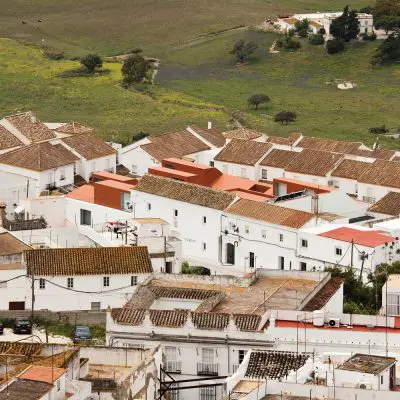
photo © Fernando Alda
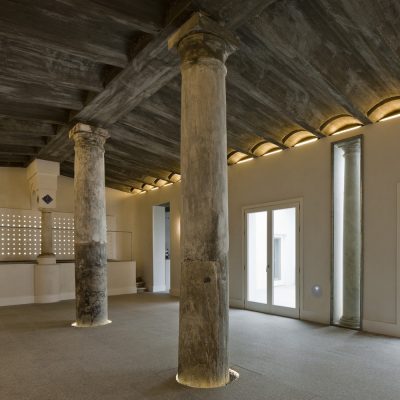
photo courtesy of European Award for Architectural Heritage Intervention
– Restoration of the Palace and Gardens of San Telmo as the Presidential Headquarters of the Regional Government of Andalusia, by Guillermo Vázquez Consuegra (Seville, Spain)
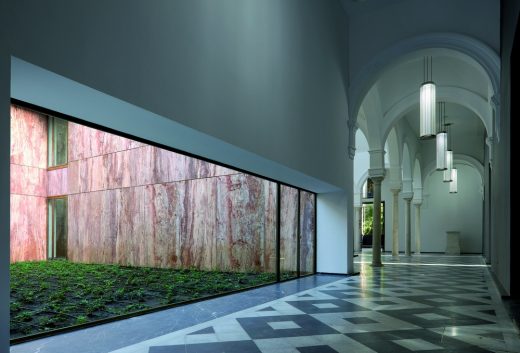
photograph © Duccio Malagamba
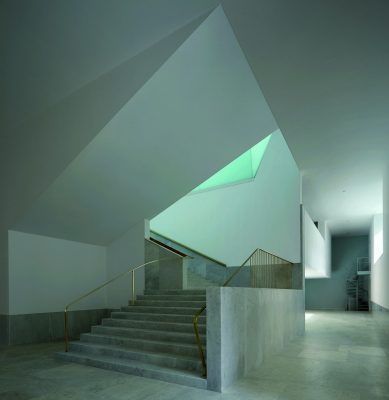
photo courtesy of European Award for Architectural Heritage Intervention
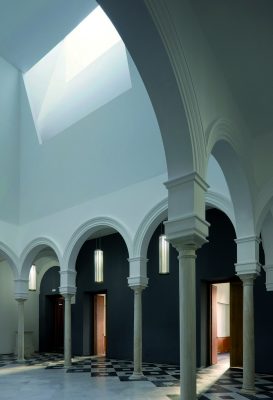
photo courtesy of European Award for Architectural Heritage Intervention
– Restoration of the 18th-century Es Pi des Català Tower, by Marià Castellò, Architect (Formentera, Spain)
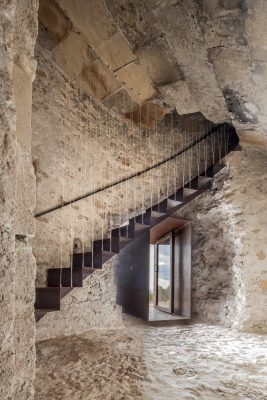
photo courtesy of Marià Castellò architect
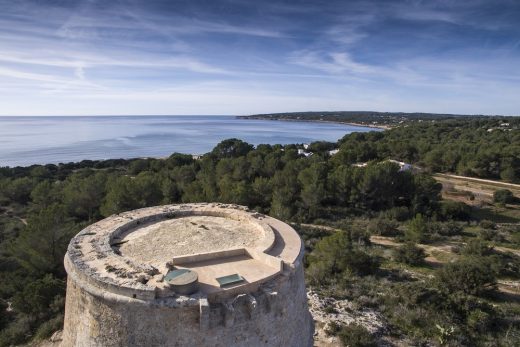
photo courtesy of Marià Castellò architect
– Refurbishment of the Church of Santa María de Vilanova de la Barca, by AleaOlea Architecture and Landscape (Lleida, Spain)
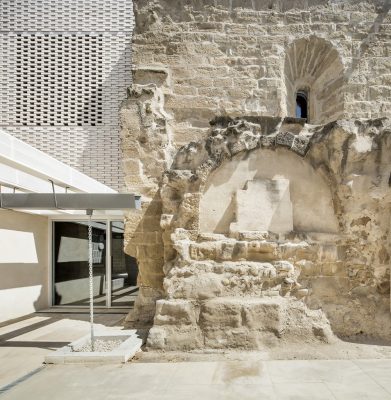
photo © Adrià Goula
– Conversion of three pumping stations of the Skjern River, by Johansen Skovsted Arkitekter (Skjern, Denmark)
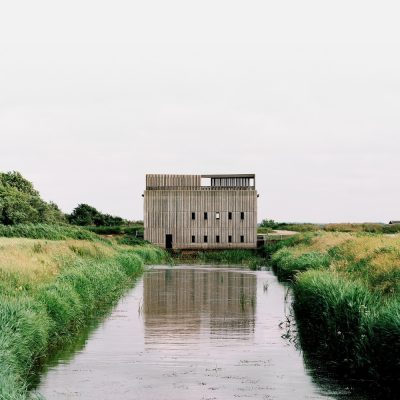
photo courtesy of European Award for Architectural Heritage Intervention
Bernardas Convent Reconversion
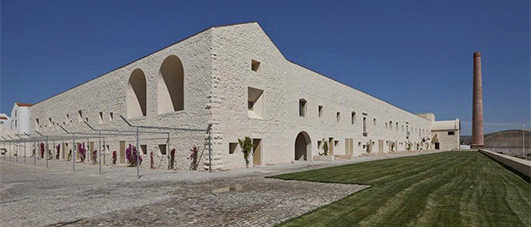
photograph : Luis Ferreira Alves
From the short-listed entries, the jury decided to grant the award to the conversion project of the Bernardas Convent in Tavira by the Portuguese architect Eduardo Souto de Moura.
The decision was taken after taking into consideration the special difficulty involved in achieving high architectural quality in a private development, creating a holiday apartment complex without undermining the architectural and heritage qualities of the original convent. Furthermore, the jury decided to award a special mention to the restoration of the Es Pi des Català Tower in Formentera, by Marià Castellò, due to the precision, simplicity and efficacy of the intervention. The jury has recognised smaller-scale heritage interventions with the goal of striking a balance in the award.
In Category B) Outdoor Spaces, four works were short-listed:
– Caramoniña Allotments, by Abalo Alonso Architects (A Coruña, Spain)
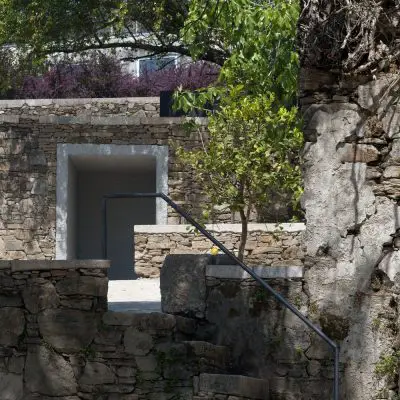
photo courtesy of European Award for Architectural Heritage Intervention
– Restoration of the irrigation system of the thermal market gardens of Caldes de Montbui, by Cíclica + Cavaa (Caldes de Montbui, Spain)
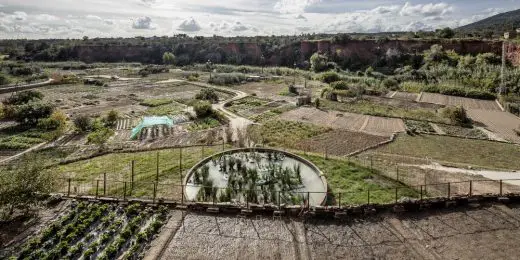
photo © Adrià Goula
– Pedra da Rá Lookout Point, by Carlos Seoane (A Coruña, Spain)
– Restoration of the Caminito del Rey Walkway, by Luis Machuca Santa-Cruz (Malaga, Spain)
The jury decided to grant the award in Category B to the Caramoniña allotments project, by Abalo Alonso Architects.
This intervention preserves and showcases an element of social heritage: the productive landscape. The project involves the masterful handling of just a handful of elements through the adoption of a subtle and interwoven approach, magnificently outlining a place and facilitating new routes that keep it active and provide it with an identity that is both new and ancient.
In Category C) Urban Planning, the four short-listed entries were:
– Special plan for the heritage protection of the ancient village of Sant Andreu del Palomar, by Joan Casadevall Serra (Barcelona, Spain)
– Cultural Termites, by Aleksandra Ajzenhamer and Vito Boševski (Zagreb, Croatia)
– Master Plan of the Hospital Real, by Javier Gallego Roca Architect (Granada, Spain)
– Programmatic and urban study for the Citröen building, by MS-A and Wessel de Jonge (Brussels, Belgium)
The winning entry in Category C was the Special plan for the heritage protection of the ancient village of Sant Andreu del Palomar, by Joan Casadevall.
The jury highlighted the historical and social approach adopted in the project, along with its sensitivity to the demands of local residents. The project attaches great importance to the value of the document in technical and executive planning as a tool to enable intervention in a historical centre while taking into account the morphological structure of the district, its green spaces, typological diversity and the configuration of the street on the basis of its façades.
In this same category, the jury considered that the Programmatic and urban study for the Citröen building, by the Belgian team of MS-A / Wessel De Jonge deserved a special mention for tackling the reuse of industrial heritage and for its recognition of modern architecture, inserting a new programme committed to a mixture of uses and interventions that engage with the existing building.
In Category D) Dissemination, the four short-listed entries were:
– VerSus: Lessons of vernacular heritage in sustainable architecture, by the ESG / Escola Superior Gallaecia and Partners. Coordinated by Mariana Correia (Portugal)
– Glèises en Encurnanclinc de la Vall d’Aran, by Josep Lluís i Ginovart (Vall d’Aran, Spain)
– A Dissemination Strategy. “Peral” New Submarine Museum, by José Manuel Chacón Bulnes, Juan Ignacio Chacón Bulnes and Diego Quevedo Carmona (Cartagena, Spain)
– Visitor information at the Amatller House Museum, by the Private Foundation Amatller Institute of Hispanic Art (Barcelona, Spain)
The winning entry was VerSus: Lessons of vernacular heritage in sustainable architecture, by the ESG / Escola Superior Gallaecia and Partners, coordinated by Mariana Correia (Portugal).
The jury considered that the project brought together scientific study and a practical call for forms of construction which, while being traditional and heritage-based, are truly sustainable and contemporary. With a large and extremely professional multidisciplinary international team, VERSUS stands out in particular for the dissemination of vernacular architecture in all sorts of formats and on many levels, which it achieves by raising the awareness of the societies that inhabit it and by reaching out to the international scientific community.
The pictures with unspecified credits (‘photo courtesy of European Award for Architectural Heritage Intervention’) are photos ceded to the award for press use, confirmed by P O C H Edición Arquitectura Comunicación, 16th June 2017. Ref. https://www.eu-architecturalheritage.org/en/rules page 13, Intellectual property and assignment of image reproduction rights, noting images are free of copyright.
Location: Barcelona, Spain
26 + 25 May 2017
Mies van der Rohe 2017 Award Winners in Barcelona
The Winners of the EU Mies Award, receive the Prize in Barcelona
The Award Granting Ceremony will take place on May 26 at the Mies van der Rohe Pavilion in Barcelona.
On May 26, the EU Mies Award Day kicks off with a free day of debates and lectures on housing, memory and identity, heritage and architecture called “EU Mies Award Talks”
EU Mies Award 2017 winners at Barcelona Pavilion:
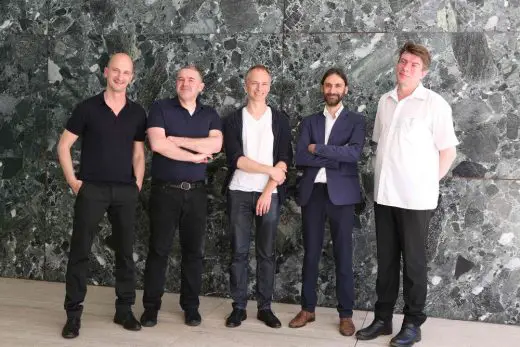
Mies van der Rohe 2017 Award Winner
Mies van der Rohe 2017 Award Winners in Barcelona
12 May 2017
Winners of Mies van der Rohe 2017 Awards
With these two awards the Jury of the Prize highlights the quality and relevance of the collective housing program.
For the first time the main Award goes to a project of renovation of an existing building.
Photos: Marcel van der Burg
DeFlat Kleiburg in Amsterdam is the 2017 Winner of Prize. The architects are NL Architects
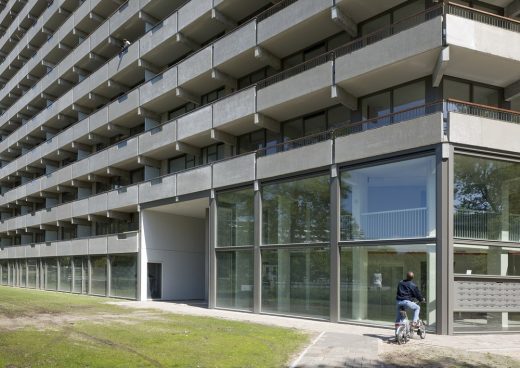
Kleiburg Apartment Building
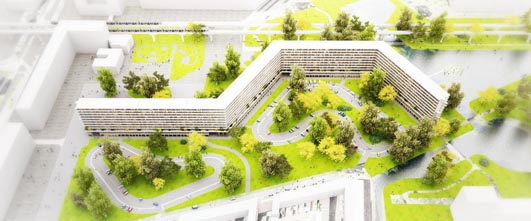
image from architect
Mies van der Rohe Awards: European Union Prize Shortlist for 2017

Mies van der Rohe 2017 Award Nominations
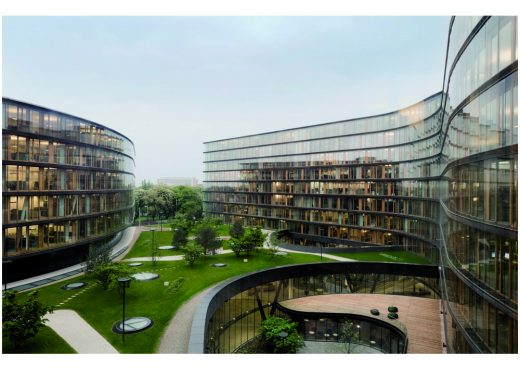
image © Werner Huthmacher
Mies van der Rohe Awards: European Union Prize
Architecture Awards
Comments / photos for the 3rd European Award for Architectural Heritage Intervention AADIPA Winners, page welcome
Website: www.miesbcn.com

